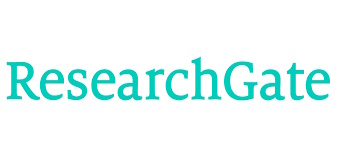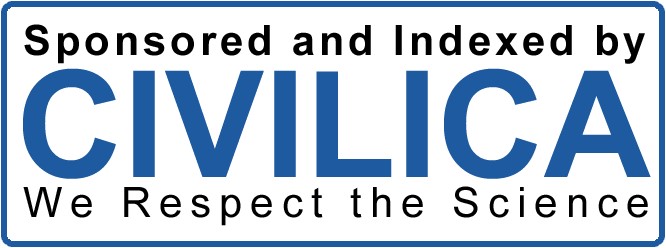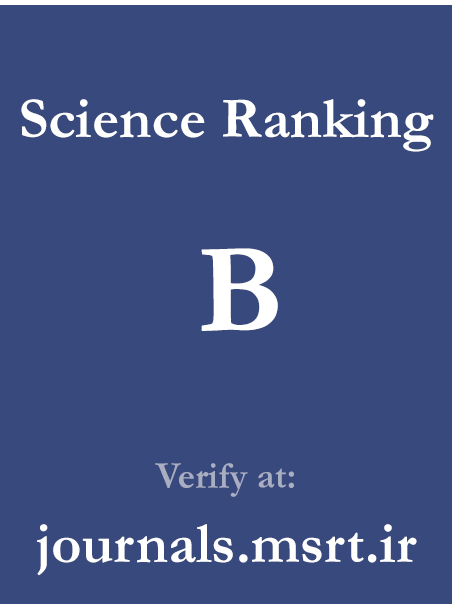Employees’ Lived Experience in Multicultural Work Environments in Governmental Organizations: A Phenomenological Study in Kermanshah Province
Keywords:
employees’ lived experience, multicultural environment, individual perception, challenges and opportunities, organizational responses, Kermanshah ProvinceAbstract
Multicultural workplaces, due to their ethnic, linguistic, and religious diversity, create unique opportunities and challenges for both employees and organizations. Examining employees’ lived experiences in such environments plays an important role in improving policies, organizational interactions, and productivity. This study aimed to gain an in-depth understanding of the lived experiences of employees in governmental organizations when facing multicultural work environments in Kermanshah Province. The present research employed a qualitative method with a phenomenological approach. The research sample included 14 employees from governmental organizations in Kermanshah Province. Interviews continued until theoretical saturation was reached and were analyzed using Van Manen’s method. Six main dimensions and twenty-one components were identified, including (1) individual perception of diversity (understanding ethnic, linguistic, and religious differences, and perception of organizational justice in relation to diversity); (2) intercultural interactions (collaboration among colleagues of different ethnicities and religions, communication challenges such as language barriers, stereotypes, and misunderstandings, cultural learning, and cultural exchange); (3) experience of challenges (discrimination and social exclusion, sense of injustice, value and norm conflicts, and inequality of opportunities); (4) experience of opportunities (synergy and innovation arising from diversity, increased organizational social capital, enhanced empathy, and employee resilience); (5) organizational responses (policies and practices for managing cultural diversity, training and development of intercultural skills, and establishing supportive welfare–social infrastructures); and (6) individual and organizational outcomes (shared identity, increased or decreased job satisfaction, improvement or decline in organizational productivity, and sense of organizational belonging). This study emphasizes the importance of designing supportive policies and programs in governmental organizations to effectively manage multicultural work environments and demonstrates that a balanced interaction between individual perception, experience of challenges, and organizational responses is the key to creating positive lived experiences and higher employee productivity.
Downloads
References
Adhikari, S. H., Gupta, A. K., & Shrestha, G. L. (2017). Multiculturalism in Nepalese Public Organization. In Proceedings of the 14th South Asian Management Forum (SAMF 2017), Maldives.
Castaneda, D. I., & Ramírez, C. A. (2021). Cultural Values and Knowledge Sharing in the Context of Sustainable Organizations. Sustainability, 13(14), 7819. https://doi.org/10.3390/su13147819
Corlateanu, A. (2023). Multiculturalism and Cross-Cultural Competence in the Military Organization. International Conference Knowledge-Based Organization, https://doi.org/10.2478/kbo-2023-0052
Croitoru, G., Florea, N. V., Ionescu, C. A., Robescu, V. O., Paschia, L., Uzlau, M. C., & Manea, M. D. (2022). Diversity in the Workplace for Sustainable Company Development. Sustainability, 14(11), 6728. https://doi.org/10.3390/su14116728
Davoudzadehmoghaddam, A., Jafarinia, S., Hassanpoor, A., & Vakili, Y. (2024). Workforce Diversity in Organizations: A Systematic Review with an Emphasis on Iranian Organizations. Journal of Innovation Management and Organizational Behavior, 4(1), 149-156. https://doi.org/10.61838/kman.ijimob.4.1.18
Derakhsha, J., & Hoshangi, H. (2018). Justice and Policy-Making for Ethnic Diversity in the Islamic Republic of Iran: Position and Implications. Political Science, 28(Autumn and Winter), 97-131. https://pkn.isu.ac.ir/article_2500.html
Doris, J. (2024). Managing Diversity in Federal Cultural Administrations: The Example of Heritage Canada and Library and Archives Canada. Emerald Publishing. https://doi.org/10.1108/978-1-83753-034-220241037
Fangda, D., & Riccucci, N. M. (2022). How Does Diversity Affect Public Organizational Performance? A Meta-Analysis. Public Administration, 101(4), 1367-1393. https://doi.org/10.1111/padm.12885
Ghasempour Ganji, S. F., Rahimnia, F., Ahanchian, M. R., & Syed, J. (2023). A Qualitative Study of Diversity Management Practices in Iran's Private Sector Organizations. Equality, Diversity and Inclusion: An International Journal, 42(7), 903-926. https://doi.org/10.1108/EDI-06-2022-0158
Greensmith, C. (2018). Desiring Diversity: The Limits of White Settler Multiculturalism in Queer Organizations. Studies in Ethnicity and Nationalism, 18(4), 57-77. https://doi.org/10.1111/sena.12264
Hashemi Toroghi, H., Denney, F., & Simpson, A. V. (2024). Cultivating Staff Equality, Diversity, and Inclusion in Higher Education in the Post-Pandemic Era: An Organizational Compassion Perspective. Frontiers in Sociology, 9, Article 1378665. https://doi.org/10.3389/fsoc.2024.1378665
Holmes, M. H., Elias, N. M., & D'Agostino, M. J. (2023). Inclusion in Public-Sector Workplaces: Charting a Path for Theory and Practice. Public Personnel Management, 52(4), 1-12. https://doi.org/10.1177/00910260231191273
Ieng Lai, K., Fong, P., & Meng, L. (2025). Cross-sectional Study Reveals Moderate Professional Benefits Among Nurses in a Multicultural Healthcare System. INQUIRY: The Journal of Health Care, Organization, Provision, and Financing, 62, 1-10. https://doi.org/10.1177/00469580251316966
Lee, Y. T., & Gyamfi, N. Y. A. (2023). Multicultural Identities at Work. https://doi.org/10.1093/acrefore/9780190224851.013.351
Moradi, A., & Amiri, M. (2020). The Relationship Between Organizational Culture and Employees' Organizational Responsibility: A Case Study of Kermanshah City. Quarterly Journal of Human Resource Management, 9(1), 261-282. https://sociology.tabrizu.ac.ir/article_10628.html
Motsamai, P. F. T., & Onyenankeya, K. (2025). Employee perceptions of internal communication in culturally diverse workplaces in South Africa: A systematic literature review. Social Sciences & Humanities Open, 11, 101589. https://doi.org/10.1016/j.ssaho.2025.101589
Saeedipour, B. (2018). The Role of Leadership Styles, Organizational Culture, and Organizational Trust on Organizational Silence (Case Study: Payame Noor University of Kermanshah Province). Research in Educational Systems, 12(Special Issue), 453-468. https://www.jiera.ir/article_65009.html
Seyed Amami, K., & Hoshangi, H. (2016). Policy-Making for Ethnic Diversity in the Islamic Republic of Iran: Perspectives, Goals, and Proposed Policies. National Studies, 17(2), 3-21. https://www.rjnsq.ir/article_96768.html
Veysian, M., Hosseini, M., Rabbani, T., & Mohadd, A. (2016). Measuring Spatial Inequality of Cultural Indicators Between Counties Using the VIKOR Model (Case Study: Kermanshah Counties). Urban Social Geography, 3(2), 131-149. https://ensani.ir/fa/article/368378/
Zulkarnain, Z., Ulinnuha, R., & Abdullah, R. (2024). Social Inclusion as a Challenge of Multiculturalism in Germany: A Study on Muslim Minorities. Alfuad Jurnal Sosial Keagamaan, 8(2), 135. https://doi.org/10.31958/jsk.v8i2.12052
Downloads
Published
Submitted
Revised
Accepted
Issue
Section
License
Copyright (c) 2025 Javad Hoshmand (Author); Kamran Nazari (Corresponding author); Naser Feghhi Farahmand (Author)

This work is licensed under a Creative Commons Attribution-NonCommercial 4.0 International License.






